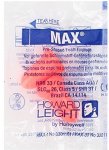For anybody does not know how noise reduction works, please read the following page.
Cooper Safety Supply is committed to providing ANSI & OSHA Certified ear plugs, ear muffs & noise reduction products for industrial & commercial applications.

www.coopersafety.com
How does NRR change decibels of exposure?
When hearing protection is worn, your level of exposure to noise is based on the NRR rating of the protection device being used. Keep in mind, however, that while the NRR is measured in decibels, the hearing protector being used does not reduce the surrounding decibel level by the exact number of decibels associated with that protector’s NRR. For example, if you are at a rock concert where the level of noise exposure is 100 dB and you are wearing earplugs with an NRR 33dB, your level of exposure would not be reduced to 67 dB. Instead, to determine the actual amount of decibel deduction applied (when decibels are measured dBA which is the most common), you take the NRR number (in dB), subtract seven, and then divide by two. Given the previous example, your noise reduction equation would look like the following: (33-7)/2 = 13. This means that if you are at a rock concert with a level of noise exposure at 100 dB and you are wearing a hearing protector with an NRR 33 dB, your new level of noise exposure is 87 dB. If you are wearing a product with an NRR of 27 it would deduct 10 decibels (27-7/2=10).
*To maximize noise reduction, hearing protectors must be worn properly.


















